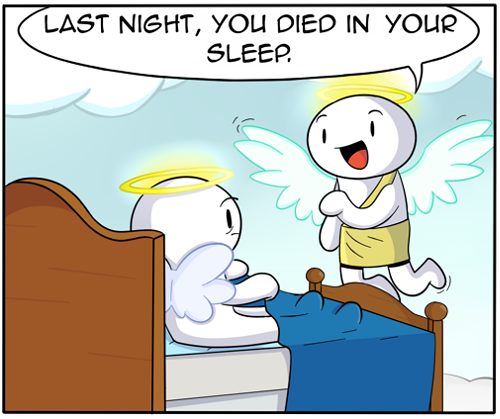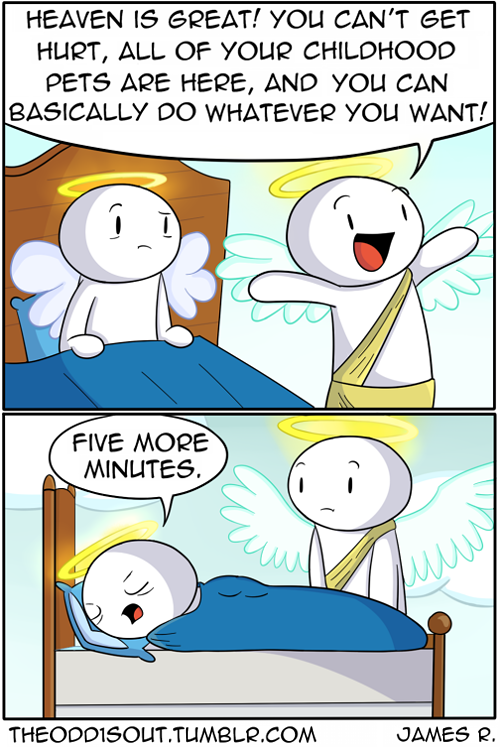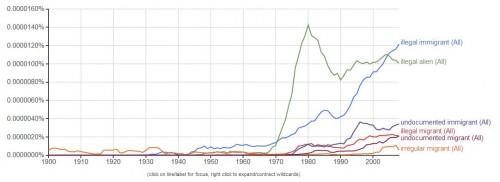
I like to take drugs in the daytime. I know that I’m in the minority on this one, but I find that a warm sunny forest is generally far more conducive to productive psychedelic exploration than the inside of a dark, loud, crowded club packed with tripping and/or tweaked out strangers, undercover police officers, and well-intentioned entrepreneurs cheerfully charging all that the market will bear for a tiny little bottle of freaking tap water.
It’s not that I fail to appreciate the upside of nocturnal adventures. Many of my more cherished psychedelic experiences have taken place under the cover of darkness. Most of them, actually. Evening is when things typically tend to get rolling, especially in Festival Land, which kind of makes sense, particularly in environments like Burning Man where it’s often too uncomfortably hot to do much of anything in the daytime. Playing too hard and forgetting to stay hydrated can easily land a discombobulated day tripper in the medical tent. Or worse. Besides which, most of the best dance scenes are at night, and the beautiful light-up stuff is far more impressive when it’s actually turned on. Frankly, you probably look a whole lot sexier in the dark, too. Especially if your eyes are kind of bugging out, and you can’t stop trying to chew your own bottom lip off.
But I was a Rainbow Gathering kid before I was a Burner. I’ve certainly spent more than my share of endless summer afternoons frolicking in alchemically enchanted meadows full of wildflowers. If you’ve not yet been fortunate enough to sample such diurnal delights for yourself, then the Teafaerie is here to tell you that you’re missing out.
Contrary to what you may have heard from certain suspiciously sparkly vampiric types, the rays of the “deadly day star” do not, in fact, blind the eyes and burn the skin. Well, okay, I guess that they actually do. Do not look directly at the sun. But the epidermal immolation happens fairly slowly, and for the most part it can be warded off by the judicious application of topical sunscreen. Indeed, so long as you stay hydrated and establish a shady refuge, old Sol can be a surprisingly powerful psychedelic ally. It is the ultimate source of all life on Earth, after all, and various cultures everywhere and at all times have worshiped and revered it. It certainly does light up the world. And it feels really nice on my skin. Plus if I look at the sun with my eyes closed, it often activates an intensely compelling aspect of my internal fantasia that is entirely its own; one that differs distinctly in both style and content from the familiar suite of psychedelic imagery that tends to arise for me from within the fecund void of primeval darkness.
Jam of a Lifetime
I’ve been thinking about psychedelic sunshine a lot lately, mainly because of a truly incredible series of ayahuasca ceremonies that I was recently privileged to attend. They took place in the Netherlands, where ayahuasca is provisionally legal under certain circumstances. The event had been billed as the “Jam of a Lifetime”. Three days of live music, community, and healing were promised to the lucky participants, and a few special scholarships were to be made available to particularly talented musicians who could not otherwise afford to attend. Plus they chose to offer an additional scholarship to a certain rather musically inept Teafaerie, who just so happened to be in Amsterdam anyway, and who was planning on trying iboga for the first time on the following weekend. (But that’s another story to be told another time…)
It all kind of lined up so effortlessly that I figured I might as well check it out. I was intensely preoccupied with anxiety about my upcoming iboga journey, and to tell you the truth I didn’t really give much thought to what the Jam was going to be like at all, except insofar as it seemed like a fortuitous opportunity to straighten my inner house up a little bit before the cosmic cleaning lady came over to disinter all of my deepest darkest dust bunnies.

When I arrived on the evening of the first ceremony, I was somewhat taken aback by the number of mattresses that had been laid out. Places had been set for something like 40 participants! The room was large enough to accommodate that many people sitting side by side around the perimeter, but just barely. I took a spot in the corner near the door, wondering what I’d gotten myself into, and chastising myself for not having taken the time to research this outfit at any great depth before signing on. Why do you always do this to us, Faerie? Granted, a few dozen people on ayahuasca trying to play music together might be…awesome. But then again, we could be getting ourselves caught up in a totally cacophonous shit show.
The people seemed friendly enough. I was greeted with gusto by my contact who introduced me around to many of the others, all of whom were warmly welcoming. I was relieved that everybody spoke some English. Beautiful hangings adorned the walls and the floor was subtly heated from below somehow, making the space feel full of cheer and comfort; a bubble of protection against the freezing storm that hurled itself against the big picture windows and drummed on the numerous skylights.
The facilitator seemed like a nice guy, too. He was very gracious when we were introduced. He seemed really grounded and present, and he had precisely the right kind of a twinkle in his eye. Nevertheless I was feeling kind of anxious, and when my turn came to drink I indicated that I wanted to start with a slightly smaller portion.
The rain had let up when the music began, and the atmosphere that quickly developed in the ceremony space was truly a wonder to witness. It was more or less darkish in there, but the candle on the central altar remained lit, and people seemingly felt free to get up and move around more than I think of as being typical for ayahuasca ceremonies. Instruments came out over time, but to my surprise and delight there was a distinct lack of musical ego-tripping. There was a woman who sang like an absolute angel, and people seemed to be content to let her do her thing for a little while. Then a haunting flute joined in. Soon other musicians began contributing to the sound sculpture in ones and twos, fading in and out harmoniously (and also leaving room for silence) as if they were all in some sort of telepathic rapport with one another. Which I suddenly realized was, in fact, the case; furthermore I clearly saw that it was a big part of the raison d’être behind this whole event. I mournfully wished that I hadn’t been so stubborn about not sitting still for music lessons when I was a kid.
I could totally feel the medicine doing its work in me, but I never really got all that high, not even after I went back and re-upped with a full cup when seconds were offered. Which figured, I thought. Heck, if I had to be responsible for watching over 40 some odd voyagers at the same time, I’d probably cut the dose, too!
I got up and danced towards the end as the music became more joyful and festive. Almost everybody did. Lots of folks started singing something in Portuguese that most of them seemed to know, and there was a generalized sense of familial camaraderie in the air. By the time it all wound down I was sincerely looking forward to the next two evenings. This was turning out to be fun!
But wait, what did the facilitator just say? Meet back here for the next ceremony at 10 o’clock in the morning? At first I thought that I must have heard him wrong. Nobody does ayahuasca in the daytime. That’s some kind of a sacrilege, isn’t it? I mean, it simply isn’t done! Oh yeah, and the medicine is going to be about five times stronger tomorrow. This had just been the handshaking and bringing everybody into a mutual resonance ritual. The next day the real Work would begin.
I spent a sleepless night. But come morning I womaned up and took my medicine with the rest of the gang. When in Amsterdam and all… Besides which, I had Work to do. After we drank there were some communal eye gazing exercises and so forth, but I didn’t feel pressured to participate. I’m used to spending my come-up time in meditative contemplation (or sometimes just taking an anxious inventory of the sins that I might have committed since my last confession) and I didn’t want to be forced to play games or to make eye contact with strangers during that time. This was fine. Several participants went straight to their mats after the Service. Some of them donned fancy-looking eye masks that I later learned were designed to prevent light leakage, thus immersing their wearers in a darkness more total than that which one would encounter in a nighttime maloca.
The medicine was indeed much stronger this round, and the games soon started to break up. The purge was beginning, and some folks shamelessly used the provided blue barf buckets and paper towels in broad daylight, though most of us managed to make it to the nearby bathrooms in time.
And then it was upon us. Full on. For a timeless time I just sat there with my eyes closed, welcoming Aya into my system whilst simultaneously trying to keep one foot on the psychic brake pedal. I wasn’t sure if I felt safe to go super deep in that environment yet. Mama didn’t give me much of a choice in the matter, though. I soon found myself hanging on for dear life! I was starting to think that it just might be getting to be a little bit too much for me, even. Then that clear angelic voice started to sing again. Oh, wonderful! Yes! Next somebody across the room began tapping melodiously on a hang drum. After a moment a gentle acoustic guitar picked up on the tune, and I imagined that I could feel many of the individual minds in the room beginning to yearn towards the previous night’s communion. It occurred to me then that they were preparing for it, in fact. I wondered briefly if the telepathic aspect of ayahuasca might actually be somewhat amplified by having more than the usual number of transceivers in the room.
After a while, I opened my eyes. And that’s when things got magical. The storms had apparently passed in the night, and golden sunshine was streaming in through the enormous windows and the skylights, dappling the entire space with a warm luminescent radiance. I’d never seen anything like it. And if you’ve never taken ayahuasca in the daytime, you’ve never seen anything like it, either.
My first instinct was that I wanted my body to be inside of one of the luminous light pools, but my traditional training made me rather hesitant to leave my mat. Other people were getting away with it, though. One girl had moved out into the middle of he room to do yoga, and the facilitator hadn’t raised any objections. Little musical groups had begun to form on the open floor as well. And one guy was just lying down by the magnificent altar in the center of the room, deeply inhaling the fragrance of some exotic flowers. I watched rainbow-tinted dust motes dance lazily and gracefully in a sunbeam that was only a few feet away from me, leaving tracers. It seemed to be trying to seduce me. “Come here, little Faerie… There’s something that I want to show you!” Eventually I could refuse the call no longer, and I cautiously crawled into the light.
The moment that it struck me I knew that I was in for something special. The warm brightness seemed to open my heart. My whole body immediately began to feel amazing, as if I’d taken a much more psychedelic version of MDMA. I rolled around in it for a few minutes, then I lay back in Savasana (corpse pose), closed my eyes, and began to surrender. I felt perfectly safe doing so in that moment, which is unusual for me. I’m kind of cagey when it comes to surrender. I somehow knew that it was safe here, though. And the music blossomed into something victorious just as I let go, as if to confirm that the collective link was penetrating, enfolding, and upholding me.
Taking in the Radiance
A deep sense of relaxation overtook me right away. I could feel all of my chronic muscle tension pouring out into the heated floor below me. With every breath I took in more of the radiance and released a bit more of my defensiveness and anxiety. I began silently weeping with relief. I hadn’t realized how much weight I’d been carrying. The energy centers in my body that I take to be chakras slowly began to dilate open and I felt as if my body were leaving the ground. It was as if the shaft of sunlight were a tractor beam that was drawing me up towards some unimaginable spaceship. My interior holosthesia was exquisite, too! I was enveloped in radiating rainbows, and I was rising up through a delicate lattice of extremely intricate geometrical constructs towards what might have been Heaven’s own portal. I’m not even going to take a pot shot at describing that portal here. Suffice it to say that it was more beautiful than I could bear. Sincerely. I thought that if I got any closer I might well come apart just from looking at it. Which wasn’t exactly scary or anything. It seemed like a good way to go.

Photo courtesy Marco Reeuwijk. Beautiful!
I don’t know if I made it or not. The next thing that I remember was more purging. One of the many truly excellent Helpers had apparently noticed what was about to happen before I did, and when I came around I was sitting up in loving arms and a bucket was right where I needed it to be. For a moment I was shaken and disoriented, and my new friend encouraged me to lean back in her lap while another woman came over and started softly playing one of my favorite Rainbow chants. I soon found that I was able to sing along, as did a number of other people in the room. It felt like my whole tribe was welcoming me home.
After the peak had passed the music became more celebratory again, with many more of the musicians actively participating in what really did turn out to be the Jam of a Lifetime. Almost everybody who wasn’t playing an instrument got up to dance, so I busted out with my contact stick and thoroughly rocked it. I truly felt like the entire universe was dancing through me as I twirled my wide-open heart out during the glorious sunset scene, and I suspect that if it had been recorded, most of my friends would agree with me that it was one of my best sets ever.
There’s a lot more that I could say about the Jam. The third Ceremony was much like the second one, except this time I asked Mama if I could still have a baby if I wanted to, and she pointed out what later turned out to be a walnut-sized cyst on my left ovary. Of course I was concerned that it might be cancerous, and I started to become rather upset. The facilitator was immediately at my side, though, as were a couple of the Helpers. They all validated that they could feel what I was talking about by palpating my abdomen with their fingers, but their energy was calm and reassuring. They soon had me back in my sunbeam, which was probably the very best place for me to contemplate the matter, all things considered.
By the end we were all fast friends, and I’d definitely go back and drink with them again if I were ever to be granted another opportunity to do so. I very much appreciated their willingness to explore new and promising modalities.
Not that I have any problems with traditional practice. It’s doubtless been independently selected for through many generations of trial and error. Certainly there’s a lot to be said for just sitting there in the darkness and keeping your mouth shut. But there’s also a lot to be said for getting up and moving your body around. And there’s a lot to be said for the daylight. It’s comforting to be able to see one another. And yeah yeah, there’s the whole thing about how your pineal gland functions differently in the darkness. Which is a perfectly valid reason for wearing a fancy eye mask if you want to. Some people did. Turns out there’s something about the sunlight that’s magical, too, though. And I feel like it’s underappreciated.
One thing that I noticed was that nobody seemed to be getting attacked by anything. There were a couple of fairly demonic-sounding purges that went on and on over the course of the event, but my strong impression was that those people were in the process of releasing something that they had been carrying all along, rather than being harassed by foreign entities. There are a number of possible reasons for this. Maybe it’s simply a matter of expectation or the specific selection of individuals who were involved. Perhaps the energetic ecology is just differently populated in the rural area outside of Amsterdam where these ceremonies took place than it is in, say, the jungles of the Amazon where increasingly untrained humans have been willingly offering up their nervous systems for centuries. Or maybe the facilitator was just really good at holding up the fort.
Some people say that the taboo against taking ayahuasca in the daytime is because sunlight supposedly scares the spirits away. But, hey! The Teafaerie considers that to be a feature if it scares off the bad ones! I certainly felt the presence that I’ve come to think of as the spirit of ayahuasca during those ceremonies. I saw some deep healings go down, and I was shown something very real that needed attention inside of my body. So by my lights the daytime modality has a lot to recommend it. At the very least it’s worthy of a bit more research.































































 One day soon, she knows three o’clock on a Tuesday will pass and the bell above the door won’t chime. The shop’s old floorboards will not creak under his weight, and she won’t look up, because there will be no reason to.
One day soon, she knows three o’clock on a Tuesday will pass and the bell above the door won’t chime. The shop’s old floorboards will not creak under his weight, and she won’t look up, because there will be no reason to.
